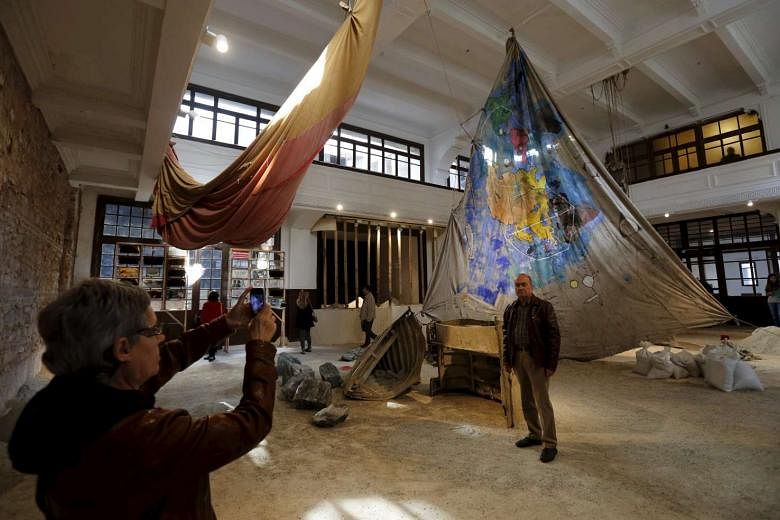ISTANBUL (Reuters) - Disparate ideas like a sea-borne zoo, an Aboriginal peace treaty and the lost birdsong of a ruined Armenian capital form a cohesive body of work at this year's Istanbul Biennial, a top international art show taking place in turbulent times.
Saltwater: A Theory of Thought Forms, curated by United States-based art historian Carolyn Christov-Bakargiev, is inspired by the waterways that shape this ancient city. The sprawling show is set in 36 venues, stretching from a Black Sea lighthouse to the island refuge of the Russian revolutionary Leon Trotsky.
The title also evokes salt's dual nature to heal and corrode.
"Salt is my way of speaking about power," said Christov-Bakargiev. "Art does not belong to one side or the other. It serves a third: people."
The biennial, now in its 14th edition, opened last month against a backdrop of violence.
Fighting between the Turkish army and the outlawed Kurdistan Workers Party that erupted suddenly in July wrecked a tenuous peace process. A suicide bombing blamed on the Islamic State killed 102 people in the capital this month ahead of an election on Sunday. War in Syria has also sparked an influx of 2 million refugees, tens of thousands of whom have made the treacherous voyage to Europe.
The upheaval has not frightened off art crowds that reached a record 450,000 this week. They stop at bathhouses, hotels and garages in a kind of scavenger hunt for art through the city.
Christov-Bakargiev said art is most vital in times of strife. "I am interested in working in conflict zones."
Most references to nearby conflicts, however, are deliberately oblique, and Christov-Bakargiev bristled at art-world criticism that the show glosses over Turkey's current problems. "You shed light on the present by looking at the past," she said.
Artist Djambawa Marawili, a 62-year-old aboriginal Australian participating in the biennial, is exhibiting his own work as well as rare artefacts from his Yolngu people, including a graphic that served as a treaty with white settlers in 1935.
Marawili said: "I can see there are reasons for conflict here. By bringing our art all this way, maybe we can open eyes and minds. Making peace is what we do with art."
In another exhibit, a dozen artists examine the massacres of Armenians by Ottoman Turks early in the last century. The showcase includes Belgian-born Francis Alys' black-and-white video The Silence of Ani, in which children play among the ghostly ruins of Ani, the former seat of the Armenian kingdom, using whistles to imitate the area's lost bird species.

